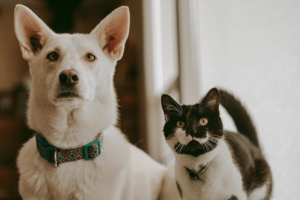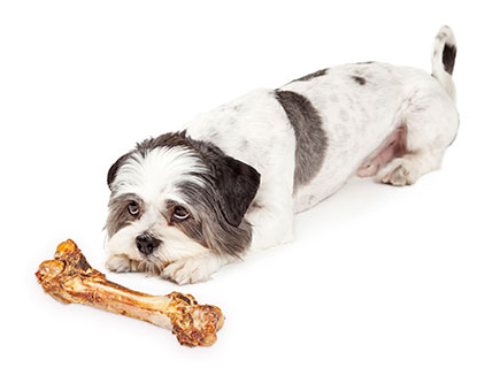WHAT IS CANCER
 Cancer occurs when a normal cell mutates or changes into an abnormal cell, which then multiplies rapidly. This original source of cancer starts in one organ and then can spread, or metastasize, via blood and lymphatic, to other organs, especially the lungs.
Cancer occurs when a normal cell mutates or changes into an abnormal cell, which then multiplies rapidly. This original source of cancer starts in one organ and then can spread, or metastasize, via blood and lymphatic, to other organs, especially the lungs.
Animals are just as susceptible to cancer as humans are. Research has shown that cancer is influenced by genetics, which means that the tendency to develop cancer can be hereditary. The Boxer is the number one breed of dog to develop cancer. The tendency to get cancer can be influenced by various elements of the environment including secondary cigarette smoke, radiation, radon gas, diet, and toxic chemicals. Diseases that weaken the immune system like feline leukemia or feline aids leave these animals more susceptible to developing cancer.
Cancer can affect any organ system. Skin cancer is very common in white and pink skinned dogs and cats with lesions usually appearing on the ears, nose around the eyes or on the stomachs. Using waterproof no. 15 sun block on exposed areas of your pet’s skin will help reduce the incidence of cancer in these animals.
Another very common type of cancer is breast cancer in female dogs and cats. It usually occurs in older unsprayed females. Spaying your dog or cat before they have their first heat cycle reduces the likely hood of acquiring the disease by 90 percent.
TREATING CANCER
Cancer treatment varies depending on the type of cancer and how advanced the cancer is at the time of diagnosis. Of course, early diagnosis is always very important for successful treatment. Surgical removal of tumors is recommended; however, if the tumor is diffuse or has already spread then radiation and chemotherapy are used.
Board certified veterinarians are called oncologists and have extra training in the diagnosis and treatment of cancer. These vets specialize in treating patients with cancer and use the most recent methods of treatment available. Your veterinarian can refer you to an oncologist if need be.
Cancer is one of the leading causes of death in companion animals and is the most common disease of aged pets. Dogs suffer from more kinds of cancer than any other domestic animal, and one in four will develop the disease in its lifetime. According to the Veterinary Cancer Society, cancer accounts for nearly half of all deaths in cats and dogs over 10 years of age. Just like in people, exposures to sunlight, smoke, asbestos, chemicals, hormones, radiation, viruses, and immune system failures can cause cancer in pets. Diagnosis usually involves biopsies, x-rays, and blood work. There are over 100 different types of cancer and each one has different symptoms, rates of growth, and rates of survival. However, don’t panic if your pet is diagnosed—some forms can be cured if caught early enough, and most can at least be treated. Treatment options may include surgery, chemotherapy, radiation, cryosurgery (freezing tissue to destroy it), hyperthermia (heating tissue to destroy it), immunotherapy or a combination of treatments.
PREVENTING CANCER
Annual physical exams by your veterinarian are important and senior pets should be examined every 6 months. The earlier you can diagnose cancer the better the prognosis!
There are several ways to help protect your pet from getting cancer.
1. Spay and Neuter. Spaying and neutering decreases the risk of mammary cancer in females and testicular cancer in males. Spaying a female dog before her first heat cycle decreases her risk for developing breast cancer to almost zero, and neutering eliminates the risk of testicular cancer in males.
2. Exercise your pets. Obese pets are at an increased risk for certain types of cancer. The incidence of cancer is 50% higher in overweight pets than those that are at a healthy weight. Regular exercise not only helps keep pets lean but also strengthens their immunity to chronic diseases such as cancer and is essential for optimal health and well-being.
3. Prevent sunburn. White cats and dogs and those with short hair are at risk for sun-induced skin cancer. Protect them by using an SPF 30 sun block on sensitive areas like the nose and tips of the ears. You should also avoid outside exposure during the brightest time of the day between 10 a.m. and 2 p.m. You might even consider outfitting your dog in a spandex bodysuit that blocks UV radiation.
4. Regular vet visits. For both people and animals, the sooner cancer is detected and treated, the better the chance the patient can be cured. That’s one of the reasons why a geriatric checkup every six months is recommended for older animals (those over the age of 7), and all others should have yearly exams.
5. Limit exposure to chemicals. Known carcinogens include herbicides, insecticides and secondhand smoke. Avoid house and garden pesticides or seek out the least-toxic products and remove your pets from passive smoke environments.





